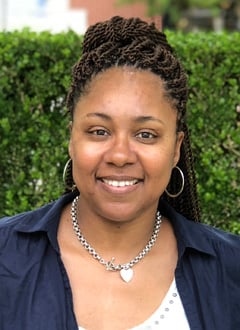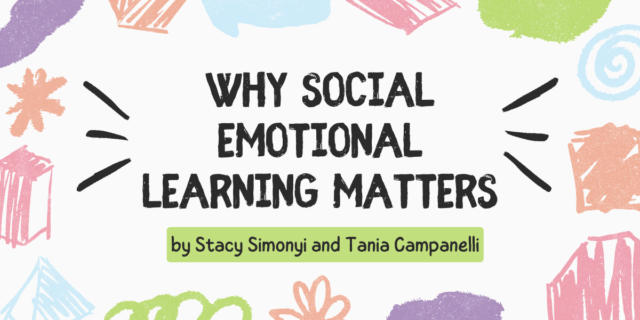
Today, we often find ourselves facing a dizzying array of materials and resources, whether they be a box of dusty skills cards handed down from a retiring teacher, a professional book passed on by a colleague, a unit plan saved from a previous year, a teacher’s manual found in the back of a storage cabinet, a procedure recommended by a supervisor, a program required by a district, a book reviewed on a blog, a set of activities discussed on Twitter, a chart found on Pinterest, a unit downloaded from a website, or a strategy highlighted in a brochure or an email. But how do we know which of these will help the children in our classrooms? How do we find helpful new resources without squandering funding or instructional time?
Today, we often find ourselves facing a dizzying array of materials and resources, whether they be a box of dusty skills cards handed down from a retiring teacher, a professional book passed on by a colleague, a unit plan saved from a previous year, a teacher’s manual found in the back of a storage cabinet, a procedure recommended by a supervisor, a program required by a district, a book reviewed on a blog, a set of activities discussed on Twitter, a chart found on Pinterest, a unit downloaded from a website, or a strategy highlighted in a brochure or an email. But how do we know which of these will help the children in our classrooms? How do we find helpful new resources without squandering funding or instructional time?
Or maybe we find ourselves working with the same resources we’ve used for years, following their guidance, yet watching students hit the same predictable frustration points. How can we make adjustments to resources to maximize our support for our students? Or do we need new resources or approaches altogether?
Or maybe we are working with resources that, for whatever reason, have come to dictate what we do in the classroom, even if they aren’t meeting our students’ needs. How can we take a step back from the resources’ suggested plans and timelines and, instead, use them strategically to best support our students? Or how can we bring in supplemental resources to help our students?
Resources are, of course, only a piece of our work, alongside our knowledge of best practices, our understanding of our students, and our ability to work with and learn from our own team of colleagues and mentors. Yet each of these pieces can have powerful effects. When we use a resource that’s well matched to our students and their academic goals, we can make strong progress. But a resource that is not a good fit can do damage by wasting time, stalling student progress, disengaging students, frustrating struggling learners, or boring advanced learners.
This can feel like many options to weigh. But, in fact, the process becomes much simpler when we keep a tight focus on the most important factors in the classroom—our students’ strengths and needs. When we invest some time in getting to know these variables, it becomes easier to decide which resources and approaches to try and to see a clear path ahead.
The aim of this book is to provide tools to help you make this happen. Consider these guiding questions:
What Are My Students' Strengths and Needs?
Think about the difference between going grocery shopping when you have a list and running into the store without a plan when you’re already hungry. You’re more likely to come home with what you need—and only what you need—when you’ve planned in advance.
How Good Is It?
Many resources can look impressive at first, but how well do they work for the students in your classroom? Consider the skills the resources support, the options they offer you as a teacher, and the alignment of the resources with your goals for your students.
How Will I Use It?
Even if a resource comes with detailed instructions, it's still up to us–the educators who know our students best–to decide how to use it best for our students.
Is It Working for My Students?
You've piloted a new resource. But is it helping your students?
How Do I Collaborate to Learn Even More?
No matter how well prepared we are for our work, collaboration can help us to support our students even better.
These guiding questions help bring the focus back to students as we search for the right tools to meet their needs from year to year!
…
Learn more about The Right Tools at Heinemann.com
 Follow us on Instagram @heinemannpub to stay up to date on the latest books, your favorite authors, and upcoming events!
Follow us on Instagram @heinemannpub to stay up to date on the latest books, your favorite authors, and upcoming events!
 From the classroom to the district, Towanda Harris has trained teachers throughout the state of Georgia. She brings almost 20 years of professional experience to each of her sessions. Her workshops are engaging and provide teachers with useful tools that allow them to reflect on their current practice. Originally an elementary school teacher, she has served as a literacy coach, adjunct professor, K–12 staff developer, and curriculum writer.
From the classroom to the district, Towanda Harris has trained teachers throughout the state of Georgia. She brings almost 20 years of professional experience to each of her sessions. Her workshops are engaging and provide teachers with useful tools that allow them to reflect on their current practice. Originally an elementary school teacher, she has served as a literacy coach, adjunct professor, K–12 staff developer, and curriculum writer.
Some of her presentations at state and local conferences include, “Welcome to Comprehensionville” (Georgia Reading First Conference 2007), “Change is Not a Four-Letter Word” (Teachers of Atlanta Conference 2017), and “Creating Superhero Writers” (GDOE Summer Literacy Institute 2018). In addition to writing and consulting, Towanda serves as an Instructional Leadership Coordinator for an urban school district in Atlanta, Georgia. She and her husband Aaron have two sons and one daughter.
You can find her online at HarrisInnovationConsulting.com
Follow her on Twitter @drtharris


